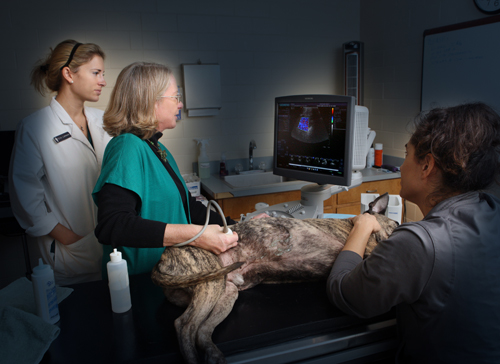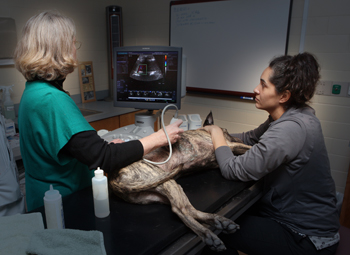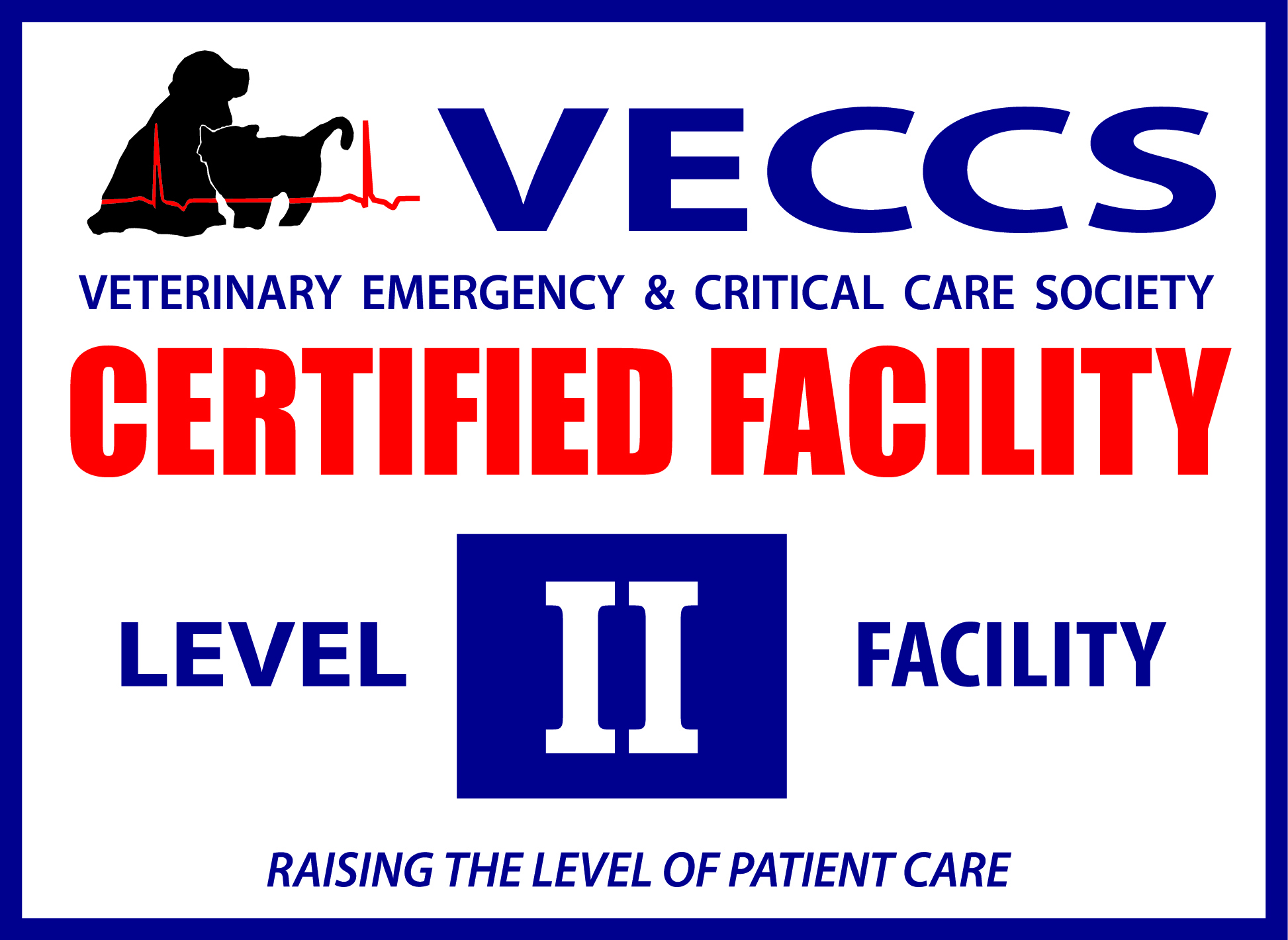
Diagnostic ultrasound imaging is an important part of the imaging service at the Veterinary Medical Teaching Hospital at Texas A&M. Dedicated and committed radiologists perform and interpret all ultrasound studies.
Diagnostic ultrasound is an economical and painless examination often requiring little or no sedation for the majority of our small animal patients. This technology is safe and does not use ionizing radiation such as x-rays. Ultrasonography provides important information on the structure and blood flow of the internal organs. It is often useful in identifying both focal and systemic diseases. It allows for targeted sampling of body cavity fluid and assists in guiding a needle to the exact location of a lesion thus avoiding and protecting other vital structures.

Ultrasound imaging, sometimes referred to as sonographic imaging, involves the use of sound waves to image the organs in the patient. Diagnostic ultrasound uses the high frequency sound waves to make images of the body’s internal organs much like a high detail version of the sonar images used by fisherman for detecting fish. The hair coat is focally clipped over the abdomen to improve contact between the transducer and the patient. This is needed to improve image quality. An ultrasound transducer is placed on the patient’s abdomen. The abdominal organs are then imaged, the images recorded and a report on the findings is included in the medical record. The image produced with ultrasound technology provides unique and superior differentiation of the organs and soft tissue structures of the body.
The Texas A&M Small Animal radiology section is equipped with state of the art diagnostic ultrasound machines (Siemens Sequoia and Siemens Antares). This is often a very busy service as many of our patients with abdominal or other soft tissue disorders benefit from the information acquired from this important diagnostic tool. Our medical imaging service provides compassionate, high quality, diagnostic information to our fellow clinicians and our clients about their pets.
The Veterinary Radiologists use the ultrasound examination for a large variety of disorders used to:
- Detect and diagnose cancer affecting abdominal and other soft tissue organs
- Determine the extent of spread of disease
- Evaluate the urinary tract for cause of blood in the urine (stones, inflammation or neoplasia)
- Determine the cause for abdominal pain
- Determine the cause for intestinal disorders (vomiting/ diarrhea)
- Determine the organ and cause for abdominal masses
- Examine vessels for anomalies or other vascular abnormalities
Videos of Ultrasound
Ultrasound image of a fetal puppy.
Ultrasound image of a dog liver. Red and blue areas denote blood flow.



